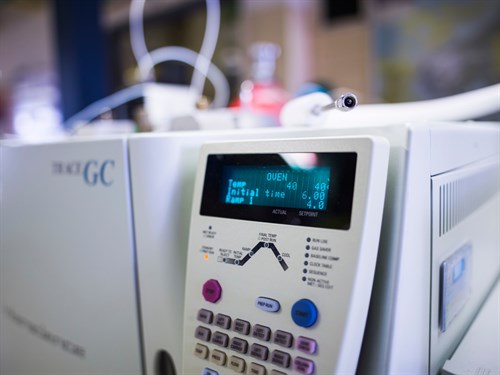DNV GL opens LNG test centre to enable safer & more efficient use of LNG
Hovik-The facility, at the organization’s existing renewable energy technology and gas laboratory site is the first type of facility with a capacity compatible for the downstream sector. Its capacity is up to 250kg of liquefied gas and boasts a heat exchanger that allows the temperature of the LNG – and therefore its boil-off – to be precisely regulated.
 |
| DNV GL Gas chromatograph |
Johan Holstein, Head of gas testing and analysis at DNV GL – Oil & Gas, said the testing of new sensor technology to rapidly identify the composition of LNG would be a priority. “The current accredited technology, gas chromatography, can take 3-5 minutes to show the composition of LNG,” Holstein explained. “Sensors can give an answer in a second.”
A stable and known composition of LNG is important for accurately assessing energy content and engine performance control. With accurate fuel composition monitoring, DNV GL`s online Propane Knock Index (PKI) methane number calculator can be used to assess the fit-for-purpose of gaseous fuels with end-use appliances instantaneously.
LNG from different regions have different compositions, which change further as LNG is used or boils off. Holstein noted that sensors have already been tested with other gas compositions, and further validation could lead to DNV GL certification.
The ability to monitor the composition of LNG in real time (combined with advances in flow metering) could also improve pricing transparency in bunkering, which has traditionally relied on mass alone rather than mass and energy content.
The impact of changing LNG composition on engine performance can also be studied at the Groningen site. Engine developers can optimise ignition patterns and compression ratios depending on the LNG composition, for example, and the facility will allow OEMs to perform compliance tests ranging from automotive engines of around 10hp to off-road and marine engines of around 500kW.
Ben Oudman, Regional Manager - Continental Europe, Eurasia, Middle East, India and Africa, DNV GL - Oil & Gas, stated that “The 2017 DNV GL Energy Transition Outlook report predicts that LNG and LPG will account for 32% of total shipping energy use in terms of technology and fuel uptake, so I believe DNV GL’s continuing investment in facilities, recommended practices and online tools is timely and builds on our established expertise in downstream LNG. Our aim is to support the industry adoption of LNG in an efficient, reliable and safe way.”
For LNG fuel quality testing, DNV GL has engaged in a strategic partnership with Veritas Petroleum Services (VPS) to further develop procedures and practices to ascertain and monitor LNG quality. DNV GL and VPS aim to develop a set of validated tools and measurement methods to provide the LNG industry with accurate, reliable and cost-efficient tools which will help break down the perceived barriers to LNG adoption.

- ExxonMobil halts 1-Bft3d blue hydrogen project in Texas
- Aramco and Yokogawa commission multiple autonomous control AI agents at Fadhili gas plant
- Ukraine will resume gas imports via Transbalkan route in November
- Mitsubishi to inject $260 MM into Brunei LNG project
- Freeport LNG (U.S.) on track to take in more natgas on Thursday after unit outage



Comments